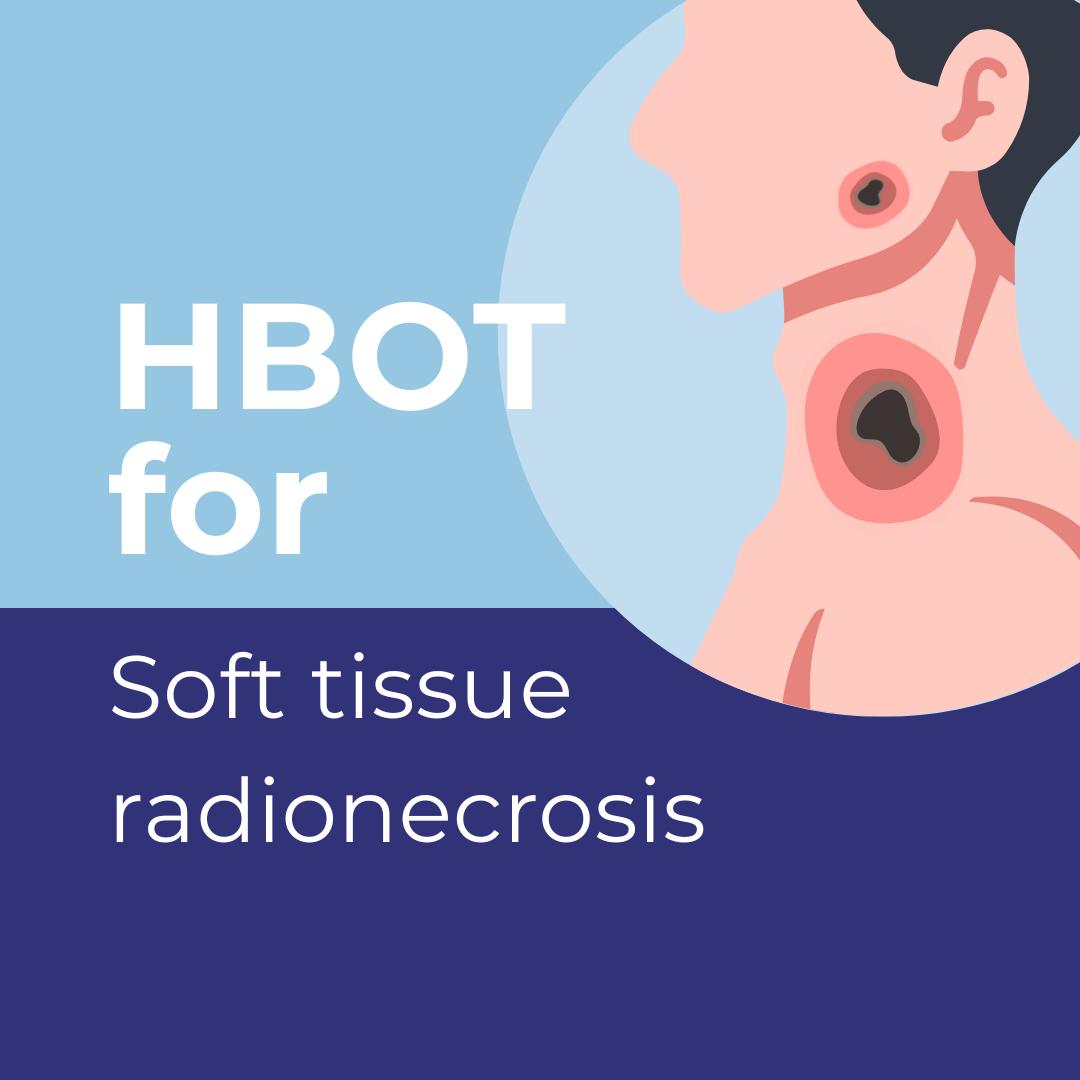
Restoring Damaged Tissue: How Hyperbaric Oxygen Therapy Treats Soft Tissue Radionecrosis
Radiation therapy is often lifesaving, but it can sometimes lead to a painful delayed side effect known as soft tissue radionecrosis (STRN). Months or even years after cancer treatment, affected tissues—such as the skin, muscle, or organs in the radiation field—may become hypoxic (low in oxygen), fibrotic, and slow to heal.
Hyperbaric Oxygen Therapy (HBOT) has emerged as an evidence-based way to stimulate healing and restore vitality to these injured tissues.
Understanding Soft Tissue Radionecrosis
Soft tissue radionecrosis (STRN) occurs when radiation damages small blood vessels and connective tissue. Common symptoms include:
- Persistent pain and swelling
- Non-healing wounds or ulcerations
- Recurrent infections and impaired function
STRN most often affects areas such as the head and neck, chest wall, pelvis, or breast after radiation therapy.
How Hyperbaric Oxygen Therapy Works
Hyperbaric Oxygen Therapy involves breathing 100% oxygen in a pressurized chamber, typically at 2.0–2.5 atmospheres absolute (ATA). This pressurized environment:
- Greatly increases oxygen delivery to tissues
- Promotes the growth of new blood vessels (angiogenesis)
- Reduces inflammation and edema
- Enhances white blood cell activity to fight infection
By reversing tissue hypoxia, HBOT provides the biological foundation for healing chronic radiation injuries.
Clinical Evidence and Protocols
HBOT is recognized by the Undersea & Hyperbaric Medical Society (UHMS) as a standard treatment for soft tissue radionecrosis. A typical course involves 30–40 daily sessions, each lasting about 90 minutes.
Studies show significant improvements in wound healing, pain reduction, and functional recovery. For example, patients with head-and-neck radionecrosis often experience decreased pain and better swallowing after a full treatment series.
What to Expect During Treatment
- Evaluation: A hyperbaric physician confirms that STRN is present and ensures no contraindications.
- Sessions: Patients relax in a comfortable chamber while breathing pure oxygen. Most feel only mild ear pressure, similar to airplane descent.
- Recovery: Benefits are cumulative, with tissue changes continuing for weeks after the final session.
A Safe, Non-Invasive Option
HBOT is non-surgical and generally well tolerated. Possible side effects—such as temporary ear pressure or mild fatigue—are usually minor and manageable. For many patients, HBOT offers a chance to restore quality of life without additional invasive procedures.